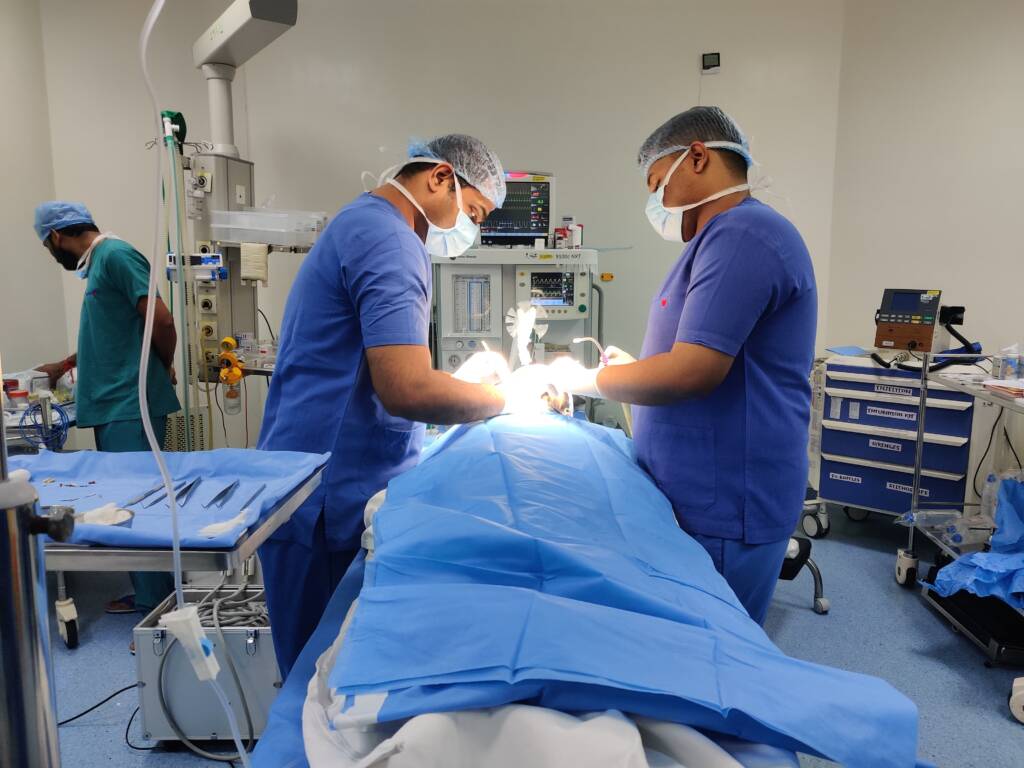Safe General Anesthesia for Pediatric Dentistry in Pune | Kids Dentistry
General Anaesthesia in Pune
General anesthesia in pediatric dentistry involves administering medications that induce a state of controlled unconsciousness in a child, allowing for dental procedures to be performed without the child being aware or feeling discomfort. It is used for various reasons and offers several benefits, but it also requires careful consideration and planning
Indications for General Anesthesia in Pediatric Dentistry
1. Severe Dental Anxiety or Phobia:
◦ Unmanageable Fear: For children who experience extreme anxiety or fear about dental procedures, general anesthesia can provide a way to complete necessary treatments without the stress of the experience.

2. Complex or Extensive Dental Work:
◦ Multiple Procedures: When multiple or complex procedures are required in a single visit, general anesthesia can be used to perform all necessary treatments efficiently and comfortably.
3. Inability to Cooperate:
◦ Developmental or Behavioral Issues: Children with developmental disabilities, behavioral disorders, or special needs who cannot stay still or follow instructions may require general anesthesia to safely complete dental work.
4. Young Age:
◦ Inadequate Cooperation: Very young children who cannot understand or cooperate during dental procedures may be candidates for general anesthesia to ensure safety and effective treatment.
5. Unsuccessful Sedation with Other Methods:
◦ Failure of Alternative Sedation: If previous attempts with other forms of sedation (like nitrous oxide or conscious sedation) have been unsuccessful or insufficient, general anesthesia may be considered.
6. Medical Conditions:
◦ Health Issues: In some cases, children with certain medical conditions may require general anesthesia to ensure that the dental procedures are conducted safely and with minimal distress.
Benefits of General Anesthesia in Pediatric Dentistry
1. Complete Unconsciousness:
◦ No Awareness: The child is completely unaware of the procedure, which helps in managing severe anxiety and ensuring a stress-free experience.
2. Comfortable and Pain-Free:
◦ Pain Management: The child does not experience pain or discomfort during the procedure, as they are fully anesthetized.
3. Efficient Treatment:
◦ Multiple Procedures: Allows for the completion of extensive or multiple procedures in one visit, reducing the need for multiple appointments and minimizing overall disruption.
4. Enhanced Safety:
◦ Controlled Environment: The procedure is conducted in a controlled environment with the child monitored continuously by an anesthesiologist or trained professional, ensuring their safety throughout the process.
5. Prevention of Trauma:
◦ Reduced Risk: Helps in preventing trauma or injury that could occur if a child is unable to remain still or cooperative during a procedure.
6. Improved Quality of Care:
◦ Comprehensive Treatment: Enables the dentist to address dental issues more comprehensively and effectively without the limitations of the child’s ability to cooperate.
Procedure for General Anesthesia
1. Pre-Procedure:
◦ Assessment: The child undergoes a thorough medical (PAC) and dental evaluation to determine the suitability of general anesthesia. This includes reviewing the child’s medical history and any potential risks.
◦ Preparation: The child and parents are given detailed instructions regarding fasting and other pre-anesthesia preparations.
2. Administration:
◦ Induction: The child is administered general anesthesia either through intravenous (IV) lines or inhaled gases. The anesthesia team ensures the child is sedated and closely monitors vital signs.
3. During the Procedure:
◦ Monitoring: The child is continuously monitored by an anesthesiologist or trained personnel to ensure their safety and adjust anesthesia levels as needed.
4. Post-Procedure:
◦ Recovery: After the procedure, the child is gradually brought out of anesthesia and monitored as they wake up. Recovery time varies, but the child is typically observed in a recovery area until they are fully awake and stable.
◦ Postoperative Care: Parents receive instructions for postoperative care, including monitoring for any potential side effects and managing pain or discomfort.
Summary
General anesthesia in pediatric dentistry is a valuable tool for managing complex or extensive dental procedures, particularly in children with severe anxiety, special needs, or those unable to cooperate. It provides complete pain relief and comfort, allowing for efficient treatment and minimizing trauma. Collaboration between the Pediatric dentist, anesthesiologist, and parents is essential to ensure a successful outcome and address any concerns or risks associated with general anesthesia.




